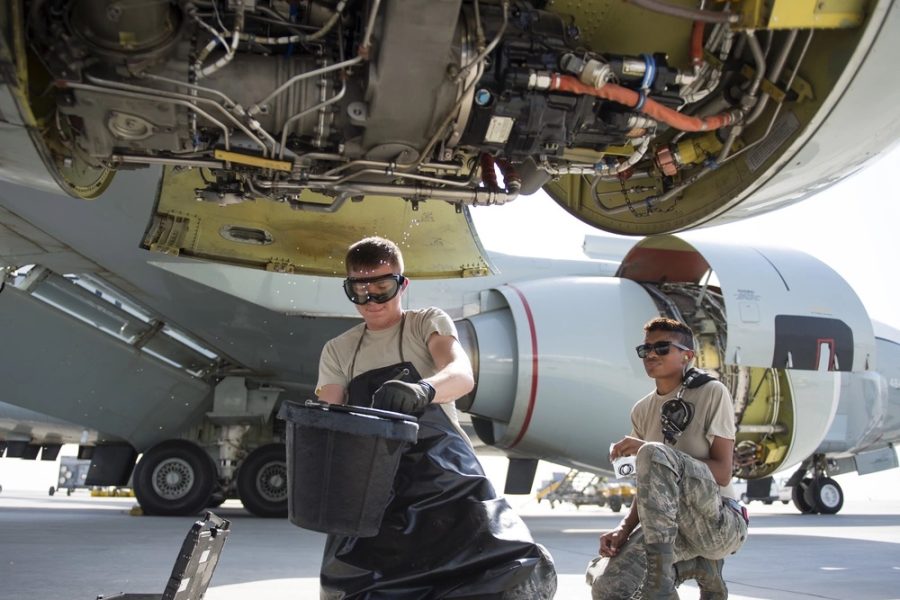Air Force aircraft readiness will suffer if Congress doesn’t provide the money for spare parts and readiness requested in the service’s Unfunded Priorities List, Chief of Staff Gen. David W. Allvin said March 28.
Out of $3.5 billion included in the annual wishlist, the Air Force tabbed $1.5 billion for “single spares restock for aircraft projected to be grounded due to lack of spare parts.” Without that, “we would have to delay” sending some aircraft to depot maintenance, Allvin said in a webinar hosted by Defense One.
“If they aren’t available, then we aren’t able to schedule them into the depot,” Allvin said, presumably because they can’t fly to depot on their own.
“‘Grounding’ is a very charged term,” Allvin added, But “the inability to have access to them and have them operate in the manner that we’d like was one of those risks we’re trying to mitigate” by adding the spares request in the unfunded priorities list.
The spares requests on the list were highly targeted to specific parts on specific aircraft that disproportionately cause them to be out of service—“which ones move the needle most”—Allvin said, and were selected using “the analytical tools that we have in the logistics and maintenance area.” The effort is part of a drive to improve parts inventories to make sure “we can keep aircraft availability, provide the combat commanders what we need today and still be able to deploy should we have to go and fight in a major conflict,” Allvin said.
The overall approach the Air Force budgeteers took was “to arrest the decline in readiness” in the unfunded priority list and deal with modernization in the actual budget, rather than include big-ticket items like additional F-35s, which have been a feature of past UPLs.
“My decision for [the] Unfunded Priority List was, really, to see what we could do this year to start ‘robusting’ that readiness, and not just to arrest the decline, but start to build it back up a little bit, because that doesn’t take away the Department’s decision space in the future,” he said. “But I didn’t want to just ask for a chunk of money just to give us more money for spares.”
The analysis of which parts would provide the biggest “immediate” benefit wasn’t completed until the late fall and winter, Allvin said, “And I didn’t want to wait for another year to make that change … that could maybe make that instant uplift to readiness in the very near term.”
The list said the $1.5 billion for spares “was partially funded during FY25, but the full requirement could not be resourced. … The fiscally constrained environment necessitated difficult decisions and it was not possible to fully fund key programs while still meeting other Air Force priorities.”
Other elements of the request focus on war readiness kits needed for Agile Combat Employment, Allvin said. Future operations that focus on smaller unit deployments to many locations will require each unit to take essential support gear and spares with it, he explained. For the past 20 years, he said, aircraft units have deployed to major operating hubs and can share those parts and that gear, but that model won’t fit with ACE.
“Now we’re going to deploy to multiple locations; you need more spare kits to be able to take the same amount of fighters to different places. That’s all this really is,” Allvin said. “These readiness … kits allow you to take the same number of fighters and go to different places and be able to operate from different places,” giving the commander “more options.”

